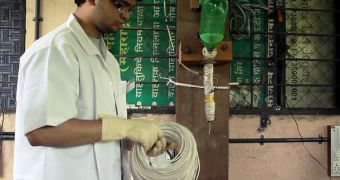3D printing plastics, even the common ABS and PLA, are quite expensive, particularly considering that, after all, it's just pure, basic plastic and nothing more. Plastic is the cheapest building material in the world, but you wouldn't know it looking at the prices of 3D printing filaments.
There are reasons why this plastic costs so much – mostly because it has to have some very specific properties so that it can be consistently printed.
But one charity thinks the model is unsustainable and that filament could be cheaper or, at the very least, more environmentally-friendly.
The techfortrade charity has set up The Ethical Filament Foundation to offer an alternative to the filaments that most 3D printers use.
Instead of using raw plastic that is expensive to produce, the group proposes filaments from recycled plastic. What's more, this recycled plastic comes from some of the poorest regions in the world, ensuring both that some people can earn some money collecting the plastic, and that waste in these regions is reduced.
"We believe that there is an opportunity to create an environmentally friendly and ethically produced filament alternative to meet the needs of the rapidly growing 3D Printing market. We also believe that by doing this we could potentially open up a new market for value added products that can be produced by waste picker groups in low income countries," the foundation writes.
The organization hopes to develop a standard and a certification program through which companies could start selling filament officially vetted by the foundation.
"The Ethical Filament Foundation is working on the development of a recognised standard and a global mark that will be licensed for use by partner organisations producing filament in accordance with its guidelines," the foundation added.
"This standard will ensure that social, economic and environmental requirements are met in the production of 3D printer filament," it said.
While the initiative is great, there are some hurdles to overcome. The big problem is a technical one; devising a recycling method that results in plastic pure enough to be usable by 3D printers is no easy task. Neither is the alternative of printers capable of working with a greater variety of plastics.

 14 DAY TRIAL //
14 DAY TRIAL //